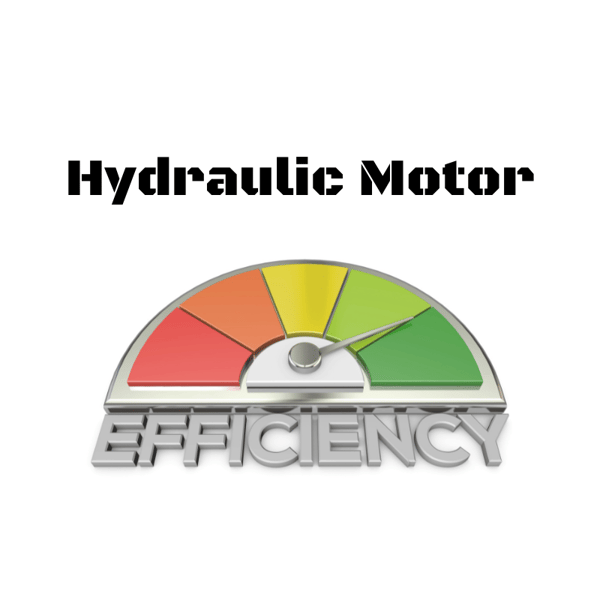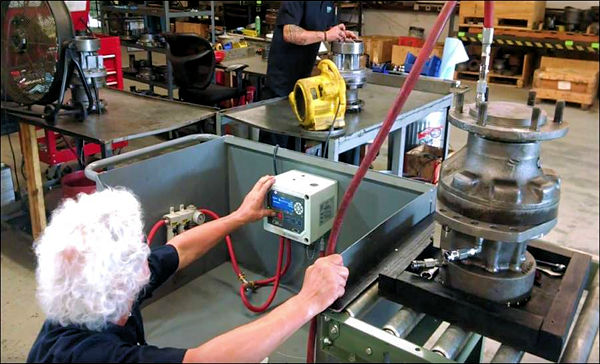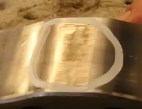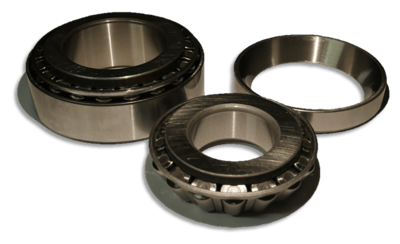Your final drive includes a hydraulic motor and that motor has a certain level of efficiency associated with it. Over time, that efficiency can drop -- so find out how efficiency is measured, what the source of losses are, and how to minimize them.

Here are a few other Shop Talk blog posts you might find helpful ...
- Guidelines to Final Drive Maintenance
- 6 Ways to Sabotage Your Final Drive
- Planetary Gears and Final Drive Motors
No system, no matter how well it’s designed, is going to be 100% efficient. High-quality, well-maintained radial piston motors are about 95% efficient while axial piston motors are about 90% efficient--which is likely why you see these two types of hydraulic motors used in the vast majority of final drive motors.
What is Efficiency for a Hydraulic Motor?
The definition of efficiency depends on what type of system you’re talking about, and even then there can be some variations. For a hydraulic motor, there are three ways efficiency can be measured or estimated: volumetric, mechanical/hydraulic, and overall efficiency.

Volumetric Efficiency
Volumetric efficiency looks at the theoretical flow rate and the actual flow rate and provides information about leakage and wear. The theoretical flow rate is pretty easy to calculate: theoretical flow = (pump displacement per revolution) x (revolution speed).
This works much better in SI units, too. If the displacement is in cc/rev and the speed is in rpm, the results will be in liters/minute. Actual flow is then measured using a flow meter. The efficiency is then actual flow / theoretical flow x 100 to get efficiency as a percent.
Mechanical Efficiency
Mechanical efficiency is based on actual work done and theoretical work done, both per revolution. This is based on theoretical torque and the actual torque, and in most hydraulic motors it’s about 0.9 (or 90%). Actual torque can be measured with a dynamometer, but is rarely done. The losses related to mechanical efficiency are directly tied to mechanical friction between mating parts.

Overall Efficiency
Overall efficiency combines volumetric and mechanical efficiency. It's simply the product of these two values: overall efficiency = mechanical efficiency x volumetric efficiency, and gives you an overall idea of how efficient your hydraulic motor is.
Where Do Losses Come From?
In a hydraulic motor, there are two sources for losses:
- Volumetric losses that occur because of internal fluid leakage in the motor
- Mechanical losses due to friction
Some degree of internal leakage is normal and actually beneficial, but past a certain point it becomes a problem. Excess internal leakage most often results from wear. For example, the size of key clearances in a hydraulic motor can, over time, become larger because of abrasive wear and lead to internal leakage. That type of wear usually results from contaminated hydraulic fluid but can also result from normal wear and tear.

Friction is another major source of losses. Rough surfaces where they should be smooth cause friction issues with the hydraulic fluid, reducing the amount of power that can be transferred. There are other ways that friction can be introduced, however. For example, anti-friction bearings or plane bearings that are wearing out will be a source of friction.
Preventing Losses
One of the keys to preventing hydraulic motor losses relates to good maintenance practices, such as keeping the hydraulic fluid clean, replacing hydraulic filters, and not ignoring hydraulic leaks. It's also important to look for symptoms of potential problems with the bearings, such as new noises, excessive vibration, and overheating.


